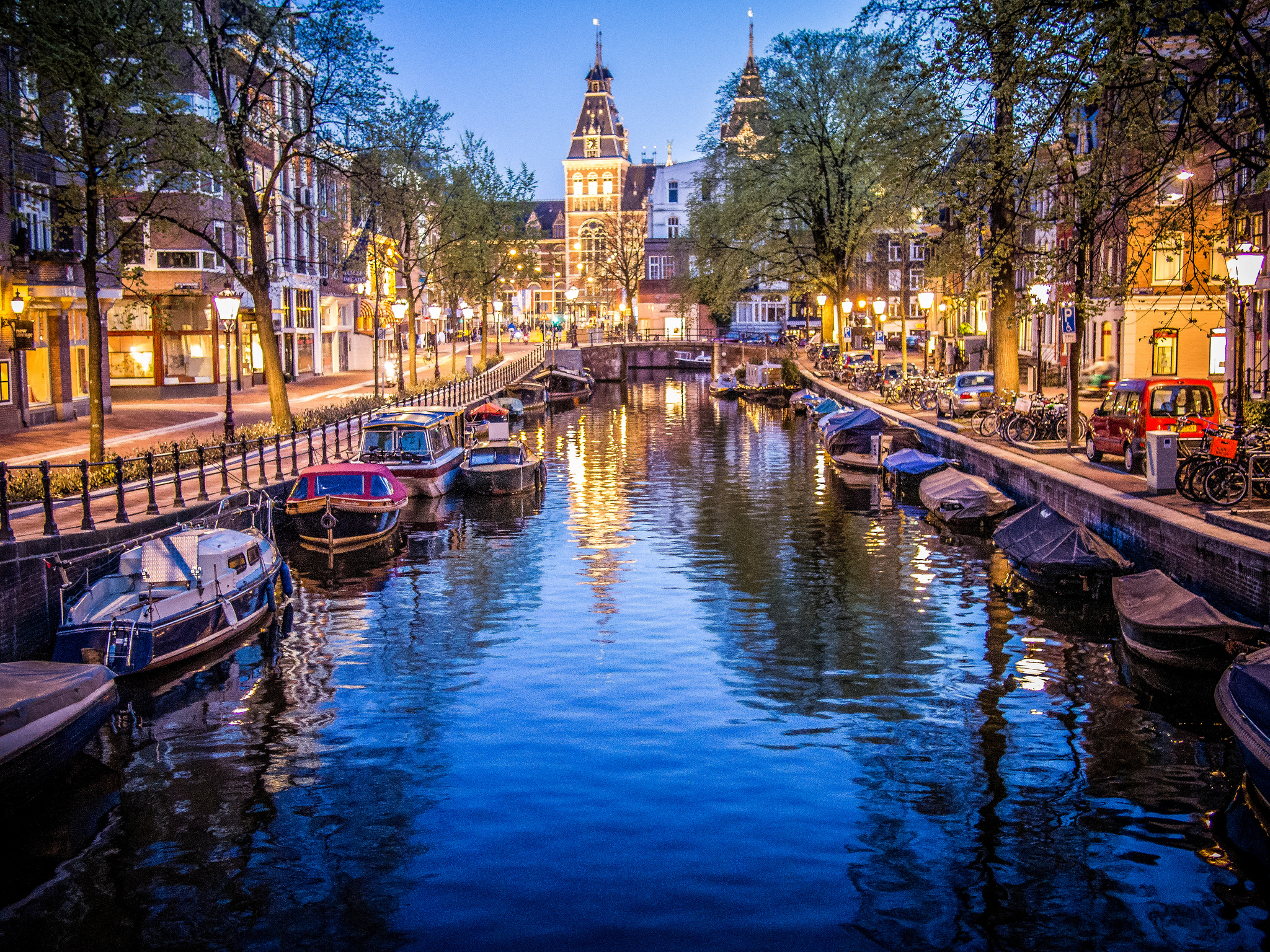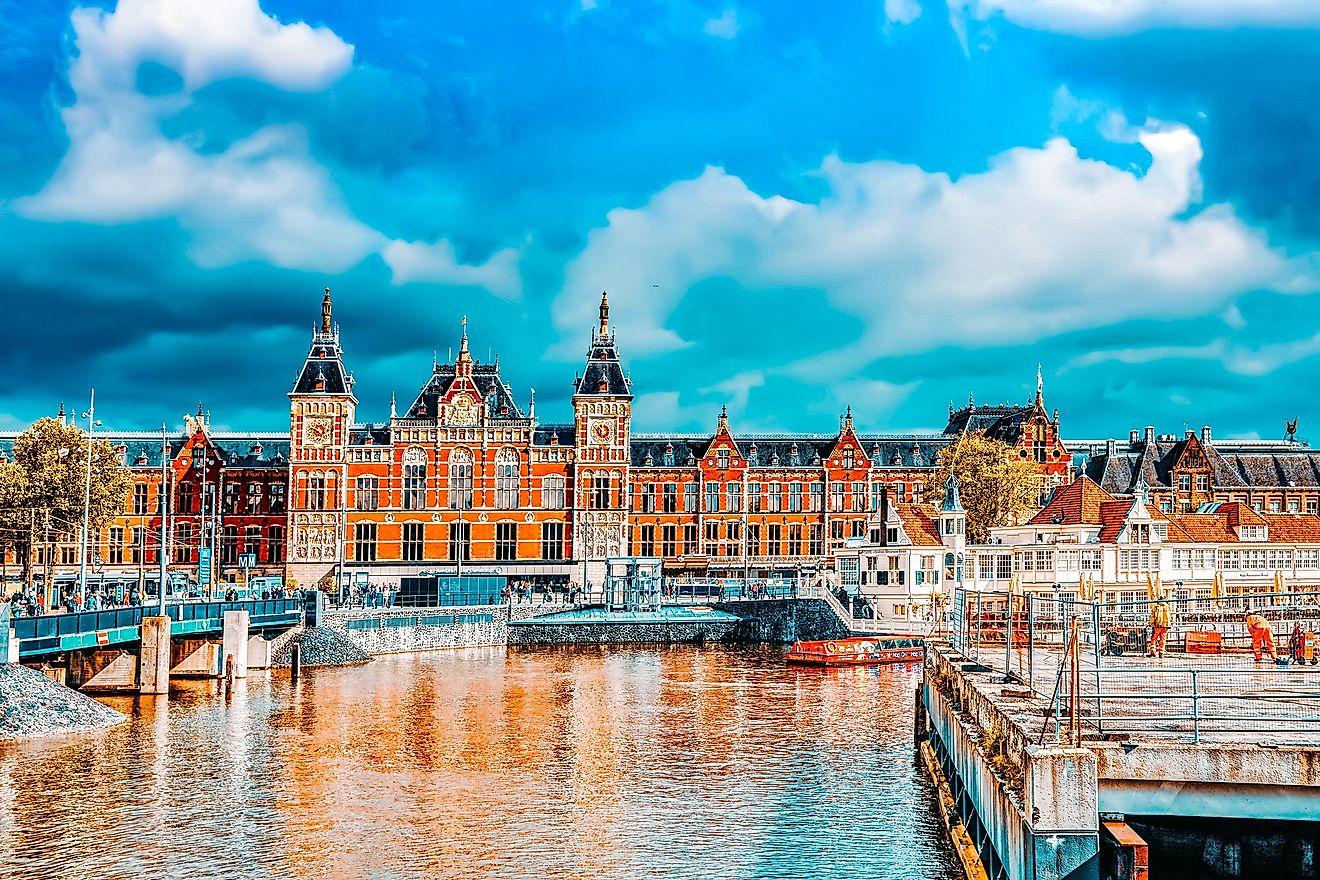Have you ever driven through the Holland Tunnel, perhaps on your way into or out of New York City, and wondered about the air you breathe? It's a rather long trip under the Hudson River, you know. While you focus on the road, there are truly silent, yet incredibly powerful, guardians working tirelessly to keep the air clean and safe for everyone inside. We're talking about the vital holland tunnel ventilation shaft system, a remarkable piece of engineering that most folks never even think about, and yet, it's absolutely crucial for this historic passageway. So, it's almost like a hidden hero of the city's transport system.
These aren't just pretty towers standing by the water, that is to say. They are the lungs of the tunnel, constantly pulling out stale air filled with vehicle emissions and bringing in fresh air from outside. Without them, a trip through the Holland Tunnel would be very, very different – and not in a good way, actually. It's a bit of a marvel how it all works, keeping millions of travelers safe each year.
Learning about the holland tunnel ventilation shaft really helps you appreciate the cleverness that goes into big city infrastructure. It's a testament to human ingenuity, and how engineers thought about driver well-being from the very beginning. Basically, it's more than just a structure; it's a constant, working system that allows the tunnel to function every single day.
Table of Contents
- The Unsung Heroes of Air: What is the Holland Tunnel Ventilation Shaft?
- Why Fresh Air Matters So Much: The Core Purpose
- Inside the Mighty Towers: How It Works
- A Marvel of Early 20th-Century Engineering
- The Name's Origin: Connecting to "Holland"
- Keeping Things Running: Maintenance and Modern Challenges
- Frequently Asked Questions
The Unsung Heroes of Air: What is the Holland Tunnel Ventilation Shaft?
When you think about the Holland Tunnel, you probably picture the long tubes that cars drive through, right? But the real magic, the thing that keeps those tubes safe and usable, happens largely thanks to the holland tunnel ventilation shaft structures. These are the tall, imposing buildings that stand at either end of the tunnel, both in Manhattan and in Jersey City. They are, in a way, quite literally the breathing apparatus for the entire tunnel system. They're pretty important, as a matter of fact.
More than just towers
It's easy to just see these buildings as part of the skyline, but they are much, much more than that. Inside each holland tunnel ventilation shaft building, there's a huge, complicated network of machinery. This includes giant fans, powerful motors, and a whole lot of ductwork. Their purpose is simple, yet absolutely vital: to move air. They pull in fresh air and push out the exhaust from the thousands of vehicles that pass through the tunnel every single day. You know, it's actually quite a complex operation.
Where they stand
There are four of these ventilation buildings in total, two on the New York side and two on the New Jersey side. Each pair works together to serve one of the tunnel's two tubes. So, for example, if you are driving towards Manhattan, the ventilation system on both sides is working to keep your specific tube clear. They are strategically placed right near the tunnel's entrances and exits, allowing for the most effective air exchange possible. This positioning is, in fact, very clever for air flow.
Why Fresh Air Matters So Much: The Core Purpose
You might think, "It's just air, what's the big deal?" But when you have thousands of cars, trucks, and buses packed into an enclosed space like a tunnel, the air quality can become a serious concern very quickly. The exhaust fumes contain things like carbon monoxide, which is very dangerous if it builds up. The holland tunnel ventilation shaft system is designed specifically to stop this from happening. It's like a giant, tireless air purifier for the tunnel, essentially.
Keeping drivers safe
The primary job of the ventilation system is to keep the levels of harmful gases, especially carbon monoxide, well below safe limits. Engineers designed the system to fully replace all the air in the tunnel every 90 seconds. Think about that for a moment: every minute and a half, all the air around you in the tunnel is completely new. This is a huge undertaking, but it's absolutely necessary for driver and passenger safety. It's a rather comforting thought, isn't it, knowing that kind of protection is there?
Clearing the air
Beyond just safety, good ventilation also helps with visibility. When there's a lot of exhaust, the air can become hazy, making it harder to see other cars or the tunnel walls. The constant movement of air from the holland tunnel ventilation shaft also helps to clear away this haze, ensuring drivers have a clear view of the road ahead. This makes the driving experience much more pleasant and, more importantly, much safer for everyone. So, it really helps with both health and clear vision.
Inside the Mighty Towers: How It Works
The true heart of the holland tunnel ventilation shaft system lies within those unassuming buildings. What looks like a simple structure from the outside is actually home to some truly massive machinery. It's a testament to the scale of engineering needed to keep such a vital piece of infrastructure running smoothly. You know, it's quite impressive when you think about it.
Giant fans at work
Each ventilation building houses enormous fans, some of the largest ever built for such a purpose at the time the tunnel was constructed. These fans, which are very powerful, can be reversed to either push air into the tunnel or pull it out. This flexibility allows the operators to fine-tune the airflow depending on traffic conditions and air quality readings. It's a bit like having a massive, controllable breeze always at your service, actually.
A complex system
The air doesn't just get blown in randomly, though. There's a very specific design. Fresh air is typically introduced from ducts located at the bottom of the tunnel roadway, pushing stale air up and out through ducts located at the top. This creates a constant, controlled flow of air. Sensors throughout the tunnel continuously monitor air quality, sending data back to a control center. If carbon monoxide levels start to rise, the system can automatically increase fan speeds to boost ventilation. This is a pretty smart setup, you know.
Moving vast amounts of air
To give you an idea of the scale, these fans can move millions of cubic feet of air every minute. That's enough air to fill a good-sized skyscraper in a very short amount of time. The sheer volume of air being processed by the holland tunnel ventilation shaft system is truly staggering, and it's what makes the tunnel a safe environment for drivers. It's really quite an achievement in air management, basically.
A Marvel of Early 20th-Century Engineering
The Holland Tunnel itself was a groundbreaking project when it opened in 1927, being the first mechanically ventilated underwater vehicular tunnel in the world. And the holland tunnel ventilation shaft system was, arguably, the most innovative part of it. The engineers, Clifford Holland and then Ole Singstad, faced unprecedented challenges in designing a system that could handle the exhaust from gasoline-powered cars, which were still relatively new at the time. It was a truly pioneering effort, in some respects.
Innovation for its time
Before the Holland Tunnel, engineers weren't sure how to safely ventilate such a long underwater tunnel for vehicles. There were many ideas, some quite wild, but the chosen system, with its massive fans and intricate ductwork, proved to be a stroke of genius. It set the standard for tunnel ventilation worldwide and showed what was possible when engineers really put their minds to a problem. It was, quite frankly, a huge leap forward in tunnel design.
Building the unseen
Constructing the ventilation shafts and installing the enormous machinery was a monumental task in itself. These buildings had to be sturdy enough to house the powerful equipment and withstand the constant vibrations. The ducts, which run the entire length of the tunnel above and below the roadway, also had to be carefully integrated into the tunnel's structure. It's a very impressive feat of construction, even today. You know, they really built something special there.
The Name's Origin: Connecting to "Holland"
It's interesting to consider why the tunnel is called the "Holland Tunnel," especially since it's located in New York, not the country of Holland or the Netherlands. The name actually honors Clifford Milburn Holland, the chief engineer who oversaw the tunnel's construction but sadly passed away before its completion. However, the choice of his last name for such a significant project might also subtly connect to the region of Holland itself, given New York's historical ties. This is a bit of a fascinating link, apparently.
A look at the name "Holland"
As you might know, "Holland" is a geographical region and former province on the western coast of the Netherlands. From the 10th to the 16th century, Holland proper was a unified political region within the Holy Roman Empire, ruled by the Count of Holland. The Netherlands, which is a country located in northwestern Europe, is often referred to as Holland, or people often use the words Holland and the Netherlands interchangeably when talking about the country in Western Europe. This historical evolution sheds light on why the Netherlands is often referred to as Holland, as the region of Holland historically represented the most significant and influential part. It's made up of the two provinces of Noord (North) Holland and Zuid (South) Holland. So, it's a very specific part of a larger country, basically.
New York's Dutch roots
New York City itself has deep historical connections to the Netherlands. The city was originally founded as New Amsterdam by Dutch settlers in the early 17th century, a colony of the Dutch Republic. This legacy is still visible in street names, architecture, and even some cultural aspects of the city. Given this rich history, it's plausible that the name "Holland" for the tunnel, while honoring Clifford Holland, also subtly echoes New York's colonial past and its connection to the Netherlands. It's a little nod to history, you know.
Linking the past to the present
So, while the holland tunnel ventilation shaft and the tunnel itself are marvels of American engineering, their name might carry a whisper of the city's old Dutch heritage. It's a nice way to link the practical needs of modern transport with the long, interesting history of the region. It shows how names can carry layers of meaning, connecting us to different times and places. You know, it's quite a thoughtful connection, in a way.
Keeping Things Running: Maintenance and Modern Challenges
Even though the Holland Tunnel and its ventilation system are nearly a century old, they are still very much in active service today. This means constant care and attention are needed to keep everything working as it should. The holland tunnel ventilation shaft buildings are not just historical landmarks; they are critical, working components of a vital transportation artery. They are, quite frankly, essential for the daily flow of traffic.
Constant care
The Port Authority of New York and New Jersey, which operates the tunnel, has teams dedicated to maintaining the ventilation system. This involves regular inspections of the fans, motors, and electrical systems, as well as cleaning the vast network of ducts. It's a never-ending job, given the constant flow of traffic and the wear and tear that comes with it. This kind of ongoing maintenance is absolutely crucial for safety and reliability, you know.
Adapting for today
While the basic principles of the holland tunnel ventilation shaft system remain the same, modern technology has brought improvements. Newer sensors provide more accurate and real-time data on air quality, allowing operators to respond even more quickly to changing conditions. The system is a powerful example of how older infrastructure can be kept relevant and safe through diligent upkeep and smart upgrades. It's pretty amazing how they keep it going, actually. Learn more about tunnel engineering on our site, and perhaps consider the next time you pass through, the incredible work these unseen giants do to keep you safe. You can also find more details on large-scale infrastructure projects by visiting a reputable source like the Port Authority of New York and New Jersey's official website, or check out this page for more information.
Frequently Asked Questions
How does the Holland Tunnel get fresh air?
The Holland Tunnel gets fresh air through its massive ventilation system, which includes four large ventilation shaft buildings. These buildings house powerful fans that draw in fresh air from outside and push it into the tunnel through a network of ducts, while simultaneously pulling out stale, exhaust-filled air.
What are the towers next to the Holland Tunnel for?
The towers next to the Holland Tunnel are the ventilation shaft buildings. Their purpose is to house the huge fans and machinery necessary to circulate air throughout the tunnel, ensuring good air quality and removing harmful vehicle emissions like carbon monoxide. They are, in essence, the tunnel's lungs.
Is the Holland Tunnel safe to drive through?
Yes, the Holland Tunnel is considered very safe to drive through. A major reason for this safety is its advanced ventilation system, which constantly monitors and regulates air quality, keeping levels of harmful gases well below dangerous thresholds. This system ensures a clear and healthy environment for drivers and passengers.



